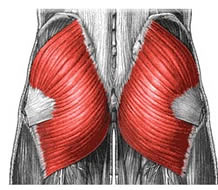the main link to the report is here:
the part that caught my eye was the selection of maps that allows a visual overview of the relative differences by county in obesity, diabetes, and physical inactivity as percentages by population. the link with the Powerpoint slides and definitions is here:
you can see the maps:
- geographic distribution of physical inactivity (darker colors reflect lower physical activity rates, with darkest meaning >32.6% of the population, physical activity refers to some leisure-time exercise)

- geographic distribution of obesity (darker colors reflect higher obesity rates, with darkest meaning >30.8% of the population)

- geographic distribution of diabetes (darker colors reflect higher diabetes rates, with darkest meaning >10.6% of the population)

my comments are as follows:
- wow. if there was ever evidence for a connection between physical activity, diabetes, and obesity, this is it. this may not prove causality, but the level of correlation is certainly something that warrants further investigation. talk about eye-opening.
- i'm curious how a map showing geographic distribution of dietary habits (overall caloric intake, consumption of vegetables/meat/etc., breakdown of steamed/grilled/fried/etc.) would look compared to these.
- i wonder what's causing such great differences in physical activity by region. it doesn't seem to be warm weather (e.g., the deep South has very warm weather, but clearly suffers from higher rates of physical inactivity, obesity, and diabetes), so what's going on?
- there's a trend in American politics of people migrating to areas with populations that share similar values as theirs. i wonder if the same thing applies to lifestyle--that is, if people who enjoy physically active lifestyles are migrating to areas of the country where there are other people who enjoy physically active lifestyles.
- it would be interesting to see if similar data and maps exist for other countries. i'd like to compare the U.S. with other populations in the world.
- clearly, some parts of the country are more engaged in physical activity and healthy lifestyles than others.
- i certainly know where my preference is to live now.
to me, this shows just how much work needs to be done to improve the health in the U.S. we--and i mean as an athletic community, as a healthy community, as a country--need to be trying encourage everyone, and i mean everyone, to adopt more physically active, more nutritionally beneficial, more mentally and emotionally and spiritually fulfilling lifestyles. because the status quo is just awful. and absolutely unacceptable.













![Validate my Atom 1.0 feed [Valid Atom 1.0]](valid-atom.png)
